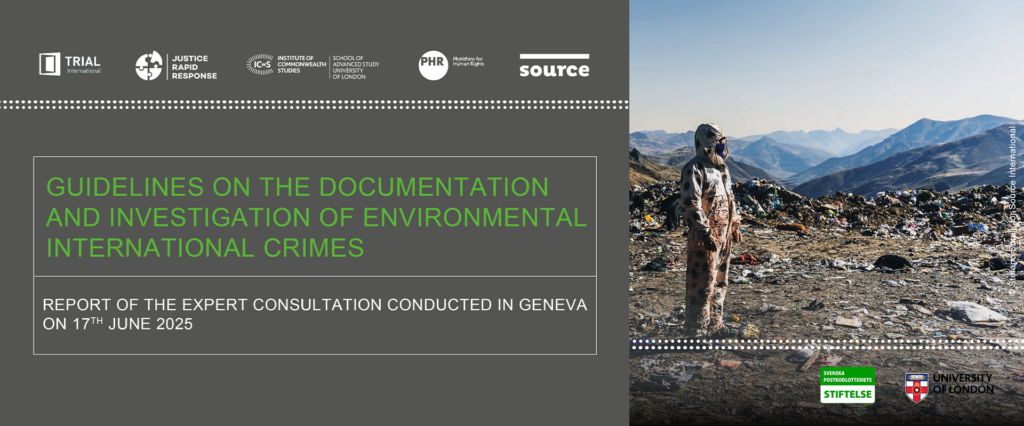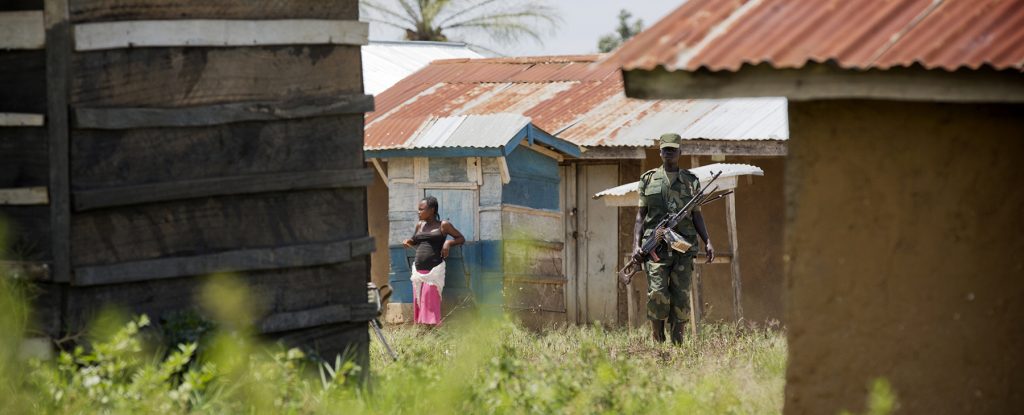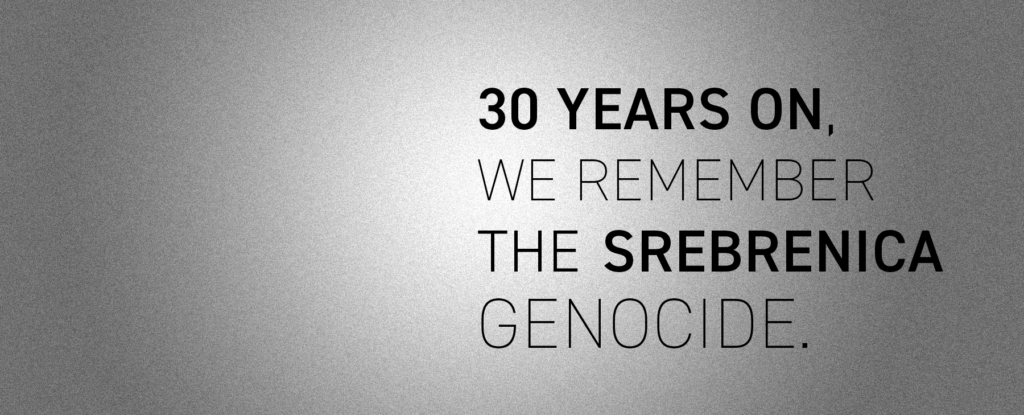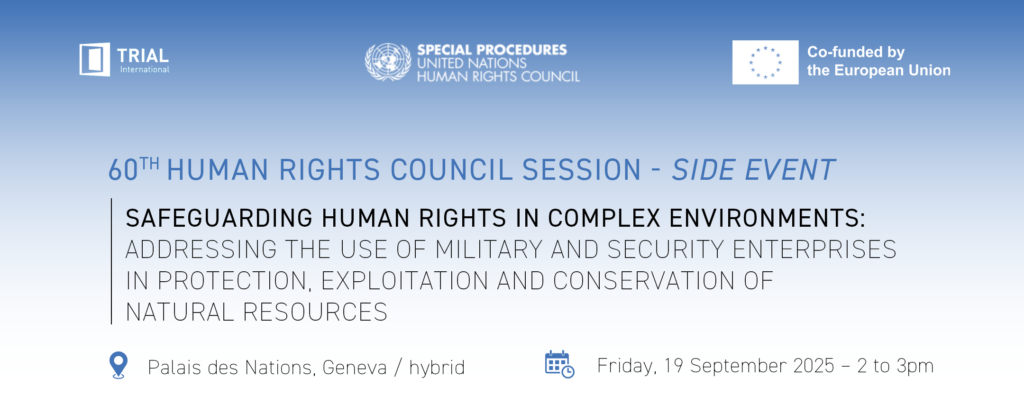The Lumbala Trial – Week 2
(17-21 November 2025)
Expert Testimony
Roger Lumbala and his defence did not appear in court throughout the second week of the trial.

Day Four – 17 November
The week opened with testimony from Xavier Macky Kisembo, of Justice Plus, who explained the strict methodology used to identify victims and prepare civil party applications. He described major obstacles, including limited access to conflict zones, threats against victims and staff, and smear campaigns aimed at discrediting their work, and outlined the violence suffered by Nande and Pygmy communities.
Dickson Dikangu Kalela, representing civil parties from Club des Amis du Droit du Congo (CAD), confirmed these challenges and stressed the symbolic importance of the proceedings.
The Clooney Justice Foundation, represented by Yasmine Chubin and Hélène Helbig de Balzac, highlighted the urgent need to document sexual violence and noted the insecurity faced by some civil parties given the situation in Goma. They provided analysis on the economics of the conflict and presented documents indicating that Lumbala acted as “president of the territory,” supporting evidence of RCD-N control and operational influence.
Serge Ngabu Kilo of LIPADHOJ described long-standing experience documenting crimes, including in the Lubanga case at the ICC. He explained that security concerns meant only three of approximately 50 identified individuals were able to join the case as civil parties, and emphasised victims’ persistent fear of reprisals in the absence of national proceedings.
Claire Thomas, director of Minority Rights Group, detailed outreach work with PAP-RDC to reach highly marginalised communities and stressed the importance of ensuring their voices are heard.
These testimonies closed a day marked by consistent accounts across organisations and by the absence of credible domestic avenues for justice.
Day Five – 18 November
Expert hearings provided broader context on international justice and the conflict.
Pascal Turlan, specialist in international criminal law, outlined how the ICC, hybrid courts, and national jurisdictions interact in the fight against impunity. Drawing on the Lubanga, Katanga, Ntaganda and Bemba cases, he explained how the ICC has addressed crimes such as child soldier recruitment, attacks on civilians, command responsibility and witness tampering, and described the Court’s structure and procedural stages.
Daniele Perissi of TRIAL International presented the organisation’s methodology and its work in the DRC. He explained why TRIAL joined the case as a civil party, described the identification of victims and witnesses, and noted the logistical challenges they face. He highlighted the strong convergence between testimonies, RCD-N documents and field reports, including evidence of forced labour practices known as effort de guerre.
Céline Bardet of We Are Not Weapons of War described patterns of sexual violence similar to those previously documented in Kivu and Kasai and underlined the role of impunity in perpetuating such crimes. She discussed difficulties identifying perpetrators within large armed groups and the enormous unmet psycho-medical needs of survivors.
Mark Lattimer, former director of Minority Rights Group, provided further context on the 2002–2003 violence. Based on interviews conducted across Ituri and North Kivu, he described extreme brutality during the Effacer le tableau operation, including attacks on Nande communities, abductions of Pygmy civilians and widespread destruction. He noted the joint involvement of the RCD-N and the MLC, the displacement of more than 80,000 people and reports of Lumbala being armed during operations.
Day Six – 19 November
Professor Luc Henkinbrant, former coordinator of the UN Mapping Report, detailed the origins and significance of the project, which documented 617 serious incidents across the DRC between 1993 and 2003. He noted that this trial is the first judicial case linked to one of those incidents. Henkinbrant described the report’s rigorous methodology, its intended role as a foundation for justice initiatives, and the existence of a confidential annex of alleged perpetrators that has never been shared publicly. He recalled findings on the roles of Uganda and Rwanda in eastern DRC and commented on sections concerning Effacer le tableau and the RCD-N. He closed by highlighting the structural weaknesses of the Congolese justice system and the need for credible transitional justice.
Filmmaker Thierry Michel then testified, explaining how decades of work and archival research informed his film L’Empire du Silence, which was screened after his appearance. He stressed that featuring Jean-Pierre Bemba prominently did not exonerate other actors and noted that this trial finally gives many victims a chance to speak publicly.
General Jérôme Pichard and Adjudant Julien Blanc of the OCLCH presented the investigation into Lumbala, outlining international cooperation, archival research and witness interviews. They detailed the timeline of inquiries since 2016 and the reconstruction of the Effacer le tableau operation using documents, images, NGO reports and local testimonies. Evidence indicated Lumbala’s role within the RCD-N, links with the MLC chain of command, widespread violence and large-scale displacement.
Day Seven – 20 November
Julien Blanc continued his testimony, presenting photographs, WhatsApp exchanges and official documents illustrating Lumbala’s position within the RCD-N hierarchy. The images, confirmed by former combatants and by Lumbala, showed him in military attire alongside RCD-N figures. Phone interceptions indicated that he continued to issue coded instructions and exert influence while in detention. Blanc also presented letters signed by Constant Ndima confirming RCD-N troop activity under Lumbala and operational coordination with the MLC, as well as a letter from Colonel Widi Ramses referring to Lumbala as his superior.
The court next heard members of the UN Special Investigation Team on the Mambasa violence. Sonia Bakar described more than 500 interviews revealing consistent accounts of systematic looting, murders, torture, forced labour and rape, first under Colonel Freddy Ngalimu and later under Colonel Widi Ramses.
Witnesses also noted planned logistics and explicit orders authorising pillage, and many referred to sexual violence and, in some cases, cannibalism.
Pierre-Antoine Braud confirmed these findings, describing terror during the second phase of Effacer le tableau, coordinated attacks on Nande communities, mass displacement and the collapse of state authority. He concluded that the scale and organisation of the violence, combined with the established chain of command, pointed to a system in which Lumbala exercised political authority while commanders implemented military actions on the ground.
Day Eight – 21 November
The court rejected the defence’s jurisdiction challenge, confirming that all legal checks had been completed before proceedings began in 2021 and that later extradition requests could not affect an already valid jurisdiction.
The day continued with the end of Julien Blanc’s testimony, reaffirming the credibility and consistency of witness accounts and the wide range of evidence analysed.
Anthropologist Jérôme Lewis described the profound marginalisation of Bambuti communities and their extreme vulnerability during the Effacer le tableau operation, which left them exposed to killings, assimilation to the enemy and symbolic exploitation.
The court then reviewed UN reports from 2001 to 2003 describing escalating violence around Isiro, cooperation between the RCD-N and MLC, and the broader logic of territorial expansion.
Finally, journalist Guy Boyoma recounted his reporting from conflict zones between 2000 and 2003, his arrests, and multiple encounters with Lumbala. He described joint ALC and RCD-N operations in Isiro, the roles of Lumbala and commander Ndima, the use of “effort de guerre” taxes and Ugandan supplies, and widespread abuses leading to massive displacement.









